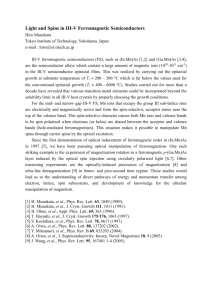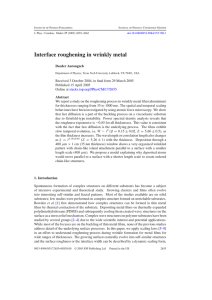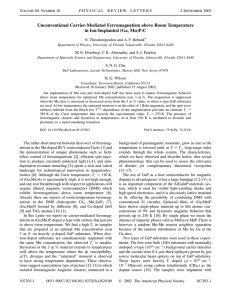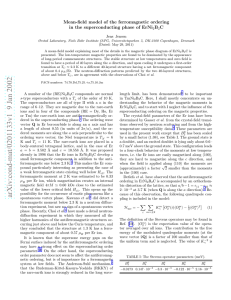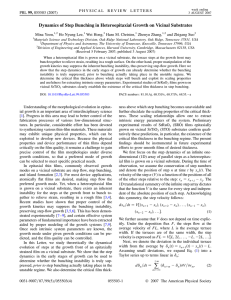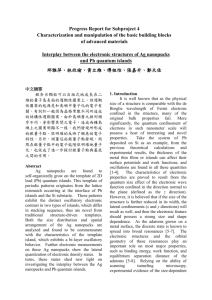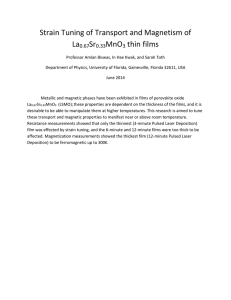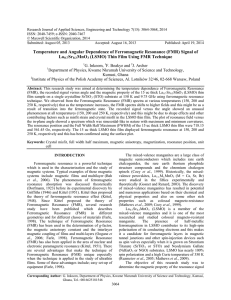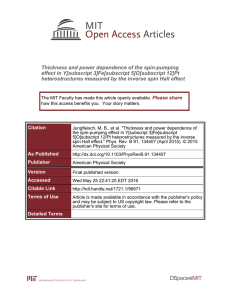10th JKT Symposium
advertisement
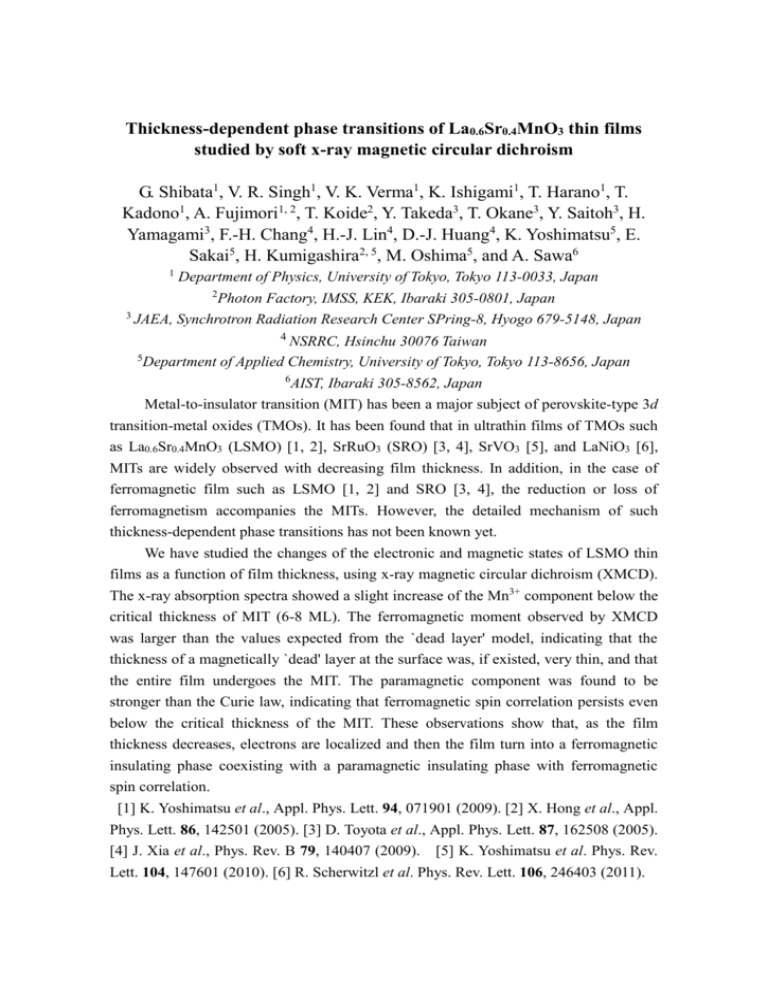
Thickness-dependent phase transitions of La0.6Sr0.4MnO3 thin films studied by soft x-ray magnetic circular dichroism G. Shibata1, V. R. Singh1, V. K. Verma1, K. Ishigami1, T. Harano1, T. Kadono1, A. Fujimori1, 2, T. Koide2, Y. Takeda3, T. Okane3, Y. Saitoh3, H. Yamagami3, F.-H. Chang4, H.-J. Lin4, D.-J. Huang4, K. Yoshimatsu5, E. Sakai5, H. Kumigashira2, 5, M. Oshima5, and A. Sawa6 1 3 Department of Physics, University of Tokyo, Tokyo 113-0033, Japan 2 Photon Factory, IMSS, KEK, Ibaraki 305-0801, Japan JAEA, Synchrotron Radiation Research Center SPring-8, Hyogo 679-5148, Japan 4 NSRRC, Hsinchu 30076 Taiwan Department of Applied Chemistry, University of Tokyo, Tokyo 113-8656, Japan 6 AIST, Ibaraki 305-8562, Japan Metal-to-insulator transition (MIT) has been a major subject of perovskite-type 3d transition-metal oxides (TMOs). It has been found that in ultrathin films of TMOs such as La0.6Sr0.4MnO3 (LSMO) [1, 2], SrRuO3 (SRO) [3, 4], SrVO3 [5], and LaNiO3 [6], MITs are widely observed with decreasing film thickness. In addition, in the case of ferromagnetic film such as LSMO [1, 2] and SRO [3, 4], the reduction or loss of ferromagnetism accompanies the MITs. However, the detailed mechanism of such 5 thickness-dependent phase transitions has not been known yet. We have studied the changes of the electronic and magnetic states of LSMO thin films as a function of film thickness, using x-ray magnetic circular dichroism (XMCD). The x-ray absorption spectra showed a slight increase of the Mn3+ component below the critical thickness of MIT (6-8 ML). The ferromagnetic moment observed by XMCD was larger than the values expected from the `dead layer' model, indicating that the thickness of a magnetically `dead' layer at the surface was, if existed, very thin, and that the entire film undergoes the MIT. The paramagnetic component was found to be stronger than the Curie law, indicating that ferromagnetic spin correlation persists even below the critical thickness of the MIT. These observations show that, as the film thickness decreases, electrons are localized and then the film turn into a ferromagnetic insulating phase coexisting with a paramagnetic insulating phase with ferromagnetic spin correlation. [1] K. Yoshimatsu et al., Appl. Phys. Lett. 94, 071901 (2009). [2] X. Hong et al., Appl. Phys. Lett. 86, 142501 (2005). [3] D. Toyota et al., Appl. Phys. Lett. 87, 162508 (2005). [4] J. Xia et al., Phys. Rev. B 79, 140407 (2009). [5] K. Yoshimatsu et al. Phys. Rev. Lett. 104, 147601 (2010). [6] R. Scherwitzl et al. Phys. Rev. Lett. 106, 246403 (2011).
